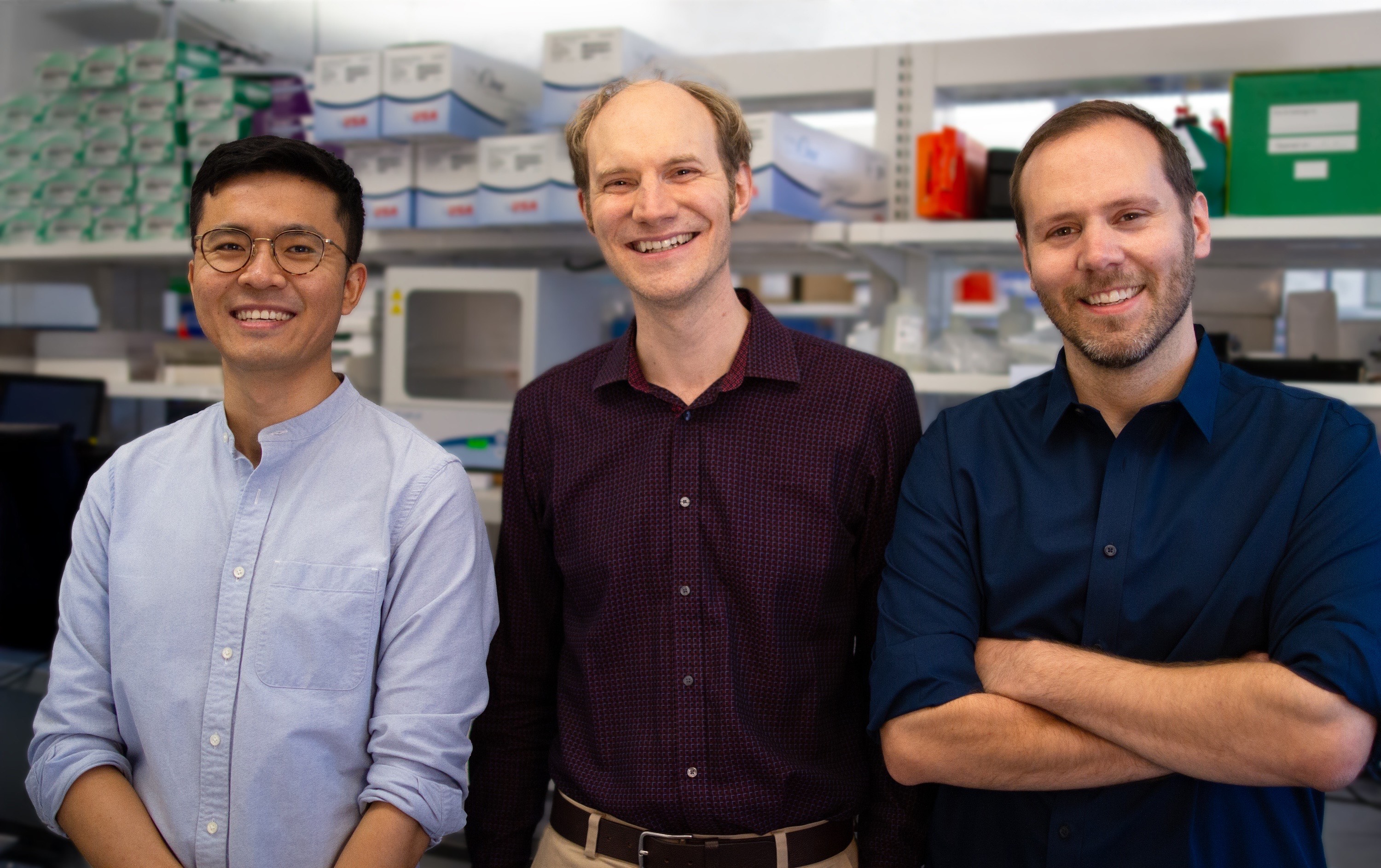Spiber’s biomaterials stack: From new production facility to fashion runway
Spiber’s biomaterials stack: From new production facility to fashion runway
Shovels strike dirt. The biomaterials facility of the future will stand here, supplying the designer proteins for a global manufacturing revolution.Spiber, the Japanese biomaterials company behind everything from hydrophobic silk to outdoor clothing, has scaled rapidly. Founded in 2007, the company has solidified partnerships with companies across sectors, like The North Face Japan, Bridgestone, and Lexus to supply protein-based biomaterials. Now, they want to ramp up production.

THE NORTH FACE Sp. Planetary Equilibrium TeeConstruction on a new production facility is officially underway in Thailand. Plans for the facility were announced in December 2018, after Spiber secured about $44 million in investment. The new building, massive in scale, will produce hundreds of tons of structural protein annually, with a capacity nearly 100 times greater than Spiber’s existing pilot plant in Japan. Spiber cites ease-of-access to sugar, the food that fuels their fermentation processes, as the reason behind the location. Once completed (estimated 2021), it is expected to be one of the largest structural protein fermentation facilities in the world. The proteins produced here will be shipped back to Japan, where Spiber’s spinning plant will churn out and test materials like engineered silk fibers, stiff resins, composites, films and gels.

Architectural rendering of Spiber’s new Thailand production facilitySpiber is upping their production capacity because the global demand for designer biomaterials is growing. Synthetic biology – and proteins, specifically – enable tunable control over the physical properties of a material. Proteins can be tuned, tweaked, and altered to change a material’s properties. The resulting protein materials can be soft or hard, flexible or rigid by changing the composition of amino acids.But designing a protein polymer with just the right properties is not so simple – it demands a lot of trial and error, and a bit of inspiration from nature. From DNA Sequence to Woven ThreadsIt all started with a team of scientists, crouched beneath Okinawa’s jungle canopies. It was hot and humid. Their shoes muddy, they waited patiently for their target – an elusive spider.“We had a material hunting team that went across Japan to search for spiders” says David Lips “They would analyze the sequences and mechanical properties of silks produced by spiders in different ecological niches.” These so-called “spider hunters” are light, mobile, and ready for action wherever the night takes them. Lips tells me that they would lie in wait, immersed in darkness, until their spider target appears.

Spiders are captured and analyzed in Japan by Spiber’s material hunting teamSpiber’s material hunting team worked on their own within Japan, but also contributed to a larger, international academic project headed by RIKEN, Japan’s largest research institution, and Keio University, who worked to collect and analyze silks globally together with international academic partners. Daniel Meyer, Spiber’s Head of Global Corporate Planning said the following about the project: “Genetic diversity is an incredibly valuable resource, and it is important to make sure that it is used in a fair way for all scientists and engineers working on silk materials. It has been really exciting to see Japanese academic institutions and international institutions work together to create possibly the world’s first public database linking spider silk genetic information to material properties.”The data collected from these spiders is incredibly valuable because it informs ongoing protein design. Each species of spider produces up to seven different types of silk, a molecular polymer consisting of repetitive, interlocking domains. Some silks are used to build webs, others for attaching strands, and two for encasing Aciniform (outer egg sac) and Cylindriform (inner egg sac). The data originating from the international collaborative research will reveal an incredibly wide variety of amino acid sequences and mechanical properties which biomaterial scientists at Spiber could refer to do something remarkable – uncover correlations between mechanical properties of a synthetic protein polymer and its amino acid sequence to inspire new protein designs.Spiber employs something called a “full-stack” approach to go from DNA sequence to final products. They are unique in the fact that they do every step of the process in-house, from gene synthesis to fermentation, purification, materialization, and product design and prototyping. While their original biomaterial designs were directly inspired by existing spider silk proteins, the company now produces a range of protein polymers, many of which have amino acid sequences that are not found in nature. Spiber calls these Brewed Protein materials.

A robotics platform for building DNA constructsThe design-build-test process, says Meyer, starts with a desired property. Spiber material scientists may propose a certain property to achieve in a material. The researchers then search their database and design an amino acid sequence that they think will produce that desired property. The DNA encoding that amino acid sequence is synthesized, implanted into microbes, and microbial fermentation and purification results in the targeted protein polymers (in the form of a raw powder). This powder can then be processed to create all kinds of different materials, from silk fibers to sponges and even hard resins.After every iteration of this cycle, the resulting biomaterial is rigorously analyzed and its properties added to the growing database. With each cycle, the team’s predictive powers improve.But going from an idea to execution is not really that simple – there are always tweaks and slight changes to be made to the pipeline, Meyer explains.“We do everything ourselves, from gene synthesis all the way down to the final designs of the biomaterials or products…That’s important because there are just too many possibilities. There are so many potential combinations to work with, and a change in the amino acid sequence of your protein molecule could mean that you need to tweak every other step in the process.”Different protein biomaterials demand changes to the system – sometimes a specific organism does not efficiently produce the proteins, or a specific DNA sequence is difficult to synthesize.“By doing everything in-house, a full-stack approach, we can do everything more efficiently. We know which type of spinning process options we have, which purification processes we have, and which types of fermentation conditions we can use; so within these parameters, we can search more efficiently and focus on creating the properties that we want for our end application,” says Meyer.For an idea of the power of Spiber’s full-stack approach, consider the Moon Parka prototype developed in collaboration with The North Face Japan. For this partnership, the team wanted to create an outdoor jacket from spider silk.The problem: spider silk contracts when it gets wet, so clothing shrinks dramatically. Natural spider silk is a horrible material for outdoor gear.That’s why Spiber set out to make a hydrophobic silk, synthesizing the repetitive DNA sequences in-house and testing iterations in small-batch bioreactors. They processed and tested dozens of bioengineered materials, recording their final mechanical properties and returning to the drawing board for future designs. After repetitive trials, Spiber not only managed to create a hydrophobic silk, but the resulting fiber is animal free and petrochemical free, relying primarily on sugars as its raw material.To date, the company has synthesized and evaluated over 1,400 DNA sequences, most of which are highly repetitive or otherwise challenging to synthesize, using a proprietary synthesis platform. The DNA produced here, and the extensive mechanical property characterization that follows, feeds into a relentless cycle of design, build, test, learn, and repeat.But now Spiber wants to bring their materials to a wider consumer market - hence the new Thai facility. With innovative flair, the Spiber team planned a show-stopping debut at the world’s foremost fashion event to unveil their protein materials to the world.From Woven Threads to Fashion RunwayA runway in Paris is, perhaps unexpectedly, the perfect place to showcase a protein collection. Clothing can be hard or soft, textured or smooth, patterned or plain – the perfect platform for designer biomaterials.

A new textile-modeling technology for three-dimensional textures developed by Nakazato and Spiber In collaboration with renowned fashion designer Yuima Nakazato, a full couture collection for Fall/Winter was made almost entirely from sustainable, protein-based biomaterials. The line-up was presented at this year’s Paris Fashion Week. Every piece in the collection was meticulously designed and produced using Spiber’s full-stack approach. The collection featured bold silhouettes and playful knits in muted earthen tones inspired by nature itself. Every piece lends credence to the power and versatility of molecular designs.“Almost everything [in the line-up] was made with our protein materials. Some parts of the shoes and hats, for example, were made from other environmentally conscious materials, but I would estimate that more than 90% of the total materials used were from our various Brewed Protein fibers,” explains Meyer.The line, appropriately called BIRTH (perhaps giving a nod to the emerging rebirth of the fashion industry?), emphasizes Nakazato’s “merging of traditional hand knitting with cutting-edge digital fabrication.”The line-up also incorporated a new processing technology developed by Nakazato and Spiber; a “textile-modeling method for creating three-dimensional textures by precisely controlling specially-tailored Brewed Protein textiles,” according to a Spiber press release.

Dress made with 100% Brewed Protein materialsThis unique textile comes to the forefront during the climax of the collection – an incredible ombré, cropped cape with hues of white and red. The garment’s texture seems to come alive, exuding a striking, three-dimensional quality.“In several pieces of the collection, we created 3D patterns in the textiles by utilizing the natural supercontraction of spider silk,” says Meyer.The line-up marks a dramatic shift in the fashion industry, where sustainability is no longer just a “buzz word,” but the method of choice. Designer biomaterials are sustainable, evolvable and, soon, they will not be limited by production capacity or cost.With Spiber’s new facility in Thailand and their ever-growing database of protein polymers with defined physical properties, future fashion designers will wield full control over their dreams – from a final garment all the way down to its DNA sequence.This is a more fashionable future.MOON PARKA is a trademark of Spiber Inc. and GOLDWIN INC.Brewed Protein is a trademark of Spiber Inc.Come meet Spiber at SynBioBeta 2019, where David Lips will be speaking on Wednesday, October 2 at 11:15 am



.svg)










.jpg)

.gif)